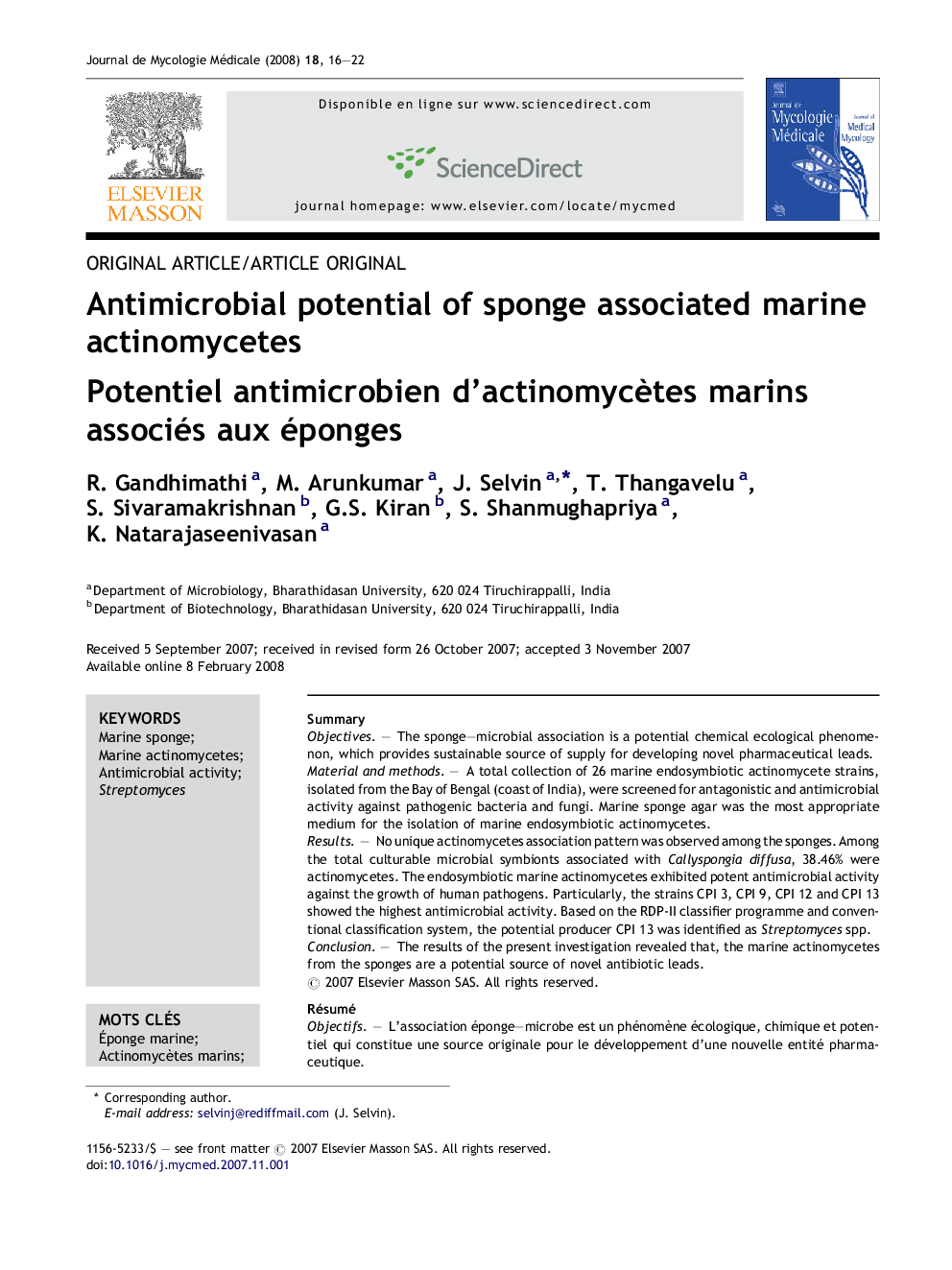| کد مقاله | کد نشریه | سال انتشار | مقاله انگلیسی | نسخه تمام متن |
|---|---|---|---|---|
| 3220223 | 1204475 | 2008 | 7 صفحه PDF | دانلود رایگان |

SummaryObjectivesThe sponge–microbial association is a potential chemical ecological phenomenon, which provides sustainable source of supply for developing novel pharmaceutical leads.Material and methodsA total collection of 26 marine endosymbiotic actinomycete strains, isolated from the Bay of Bengal (coast of India), were screened for antagonistic and antimicrobial activity against pathogenic bacteria and fungi. Marine sponge agar was the most appropriate medium for the isolation of marine endosymbiotic actinomycetes.ResultsNo unique actinomycetes association pattern was observed among the sponges. Among the total culturable microbial symbionts associated with Callyspongia diffusa, 38.46% were actinomycetes. The endosymbiotic marine actinomycetes exhibited potent antimicrobial activity against the growth of human pathogens. Particularly, the strains CPI 3, CPI 9, CPI 12 and CPI 13 showed the highest antimicrobial activity. Based on the RDP-II classifier programme and conventional classification system, the potential producer CPI 13 was identified as Streptomyces spp.ConclusionThe results of the present investigation revealed that, the marine actinomycetes from the sponges are a potential source of novel antibiotic leads.
RésuméObjectifsL’association éponge–microbe est un phénomène écologique, chimique et potentiel qui constitue une source originale pour le développement d’une nouvelle entité pharmaceutique.Matériel et méthodesVingt-six souches d’actinomycètes symbiotiques marins, isolées de la baie de côte du Bengale, Inde, ont été criblées pour leur activité antimicrobienne contre les bactéries et les champignons pathogènes. L’agar marin d’éponge était le milieu le plus approprié pour l’isolement d’actinomycètes symbiotiques marin.RésultatsAucun modèle unique d’association d’actinomycètes avec les éponges n’a été observé. Parmi les microbes symbiotiques associés avec Callyspongia diffusa, 38,46 % étaient des actinomycètes. Les actinomycètes marins symbiotiques ont montré une activité antimicrobienne puissante contre la croissance des germes pathogènes humains. Particulièrement, les souches CPI 3, CPI 9, CPI 12 et CPI 13 ont montré la plus importante activité antimicrobienne. Sur la base de programme de classification RDP et le système de classification conventionnel, le producteur potentiel CPI 13 a été identifié comme Streptomyces sp.ConclusionLes résultats de cette investigation ont révélé que les actinomycètes marins associés aux éponges constituent une source potentielle pour le développement d’antibiotiques originaux.
Journal: Journal de Mycologie Médicale / Journal of Medical Mycology - Volume 18, Issue 1, March 2008, Pages 16–22